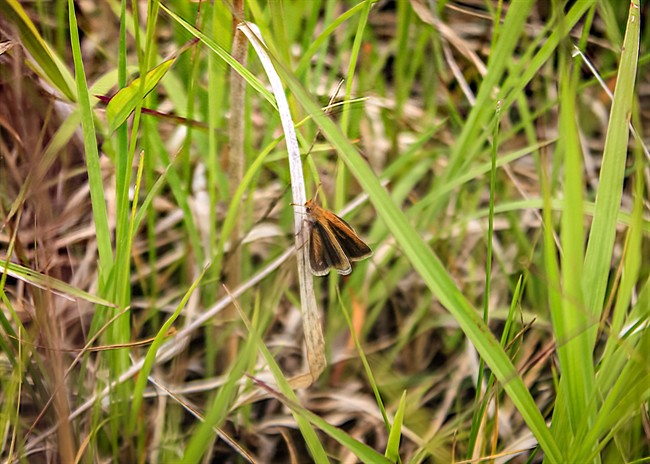WINNIPEG – Scientists are hoping Manitoba’s recent heavy snowfall could hold off what they feared might be the final blow to one of Canada’s most endangered animals.

Last week’s dump that left 19 centimetres of white stuff on the southern grasslands may have provided enough of a fluffy blanket for the poweshiek skipperling butterfly to get through the winter.
“That definitely alleviates some of the stress,” said Cary Hamel of the Nature Conservancy of Canada.
“That snow is one of the major reasons they can survive over our very harsh winters. Without it, we’re nervous.”
READ MORE: Mexico’s monarch butterfly reserve lost 24 acres to logging this year
Skipperlings — an unassuming, orange-and-brown butterfly the size of a loonie — once fluttered widely over the tallgrass prairie of southern Manitoba and the central United States. It was so common that surveyors wouldn’t bother to count it as they tracked the fate of other butterflies.
Then, something happened.
“Since 2001, it’s just been blinking out at site after site after site,” said Hamel.
“Five, six, seven years later they still haven’t seen it. And in some of the sites where they’re hanging on, they’re only seeing one or two or three or 10.”
A survey this year found only about three dozen adult skipperlings in Manitoba, and not so very many more in the U.S.
What’s going on?
“We don’t know,” Hamel said.
“Lots of people are working on the sites where they’re still hanging on, trying to figure out what the commonalities are and what’s going on with the sites where they’ve disappeared.”
Despite its former abundance, little is known about the skipperling.
“We know that it only exists in high-quality native tallgrass prairie,” Hamel said. “We know it really likes black-eyed Susans.”
READ MORE: Ontario government seeks to reduce pesticide use by 80 per cent by 2017
Scientists do know that skipperlings spend the winter as caterpillars, huddled among grass stems and leaf trash on the prairie floor. Snow is thought to be their only protection against cold temperatures and dry winds.
Hamel acknowledges experts may be wrong about the skipperling’s need for a blanket of white. But given how many other bugs survive the winter that way, it seems likely.
Until a few days ago, that blanket was thin and patchy. The lucky snowfall is a reminder of how precarious is the skipperling’s hold on life.
Skipperlings have been around a long time and have seen dry winters before. But Hamel said their low numbers and the distance between their sites have made them so vulnerable that one catastrophic event could wipe them out.
“If none make it through the winter, that’s it. They’re gone from the site.
“Every one of these caterpillars counts now. And we need them all.”
Skipperlings aren’t the most dramatic or showy of butterfly species. They’re only around for a few weeks in the summer.
“From a distance, they don’t look like much. But when you do get close, they have some interesting white stripes on the outside of their wings. And they’re kind of fuzzy and almost a little bit cute.”
In addition to their other roles in the ecosystem, they’re important pollinators for prairie plants.
“They’re really amazing creatures that we’re just starting to understand,” Hamel said.



Comments